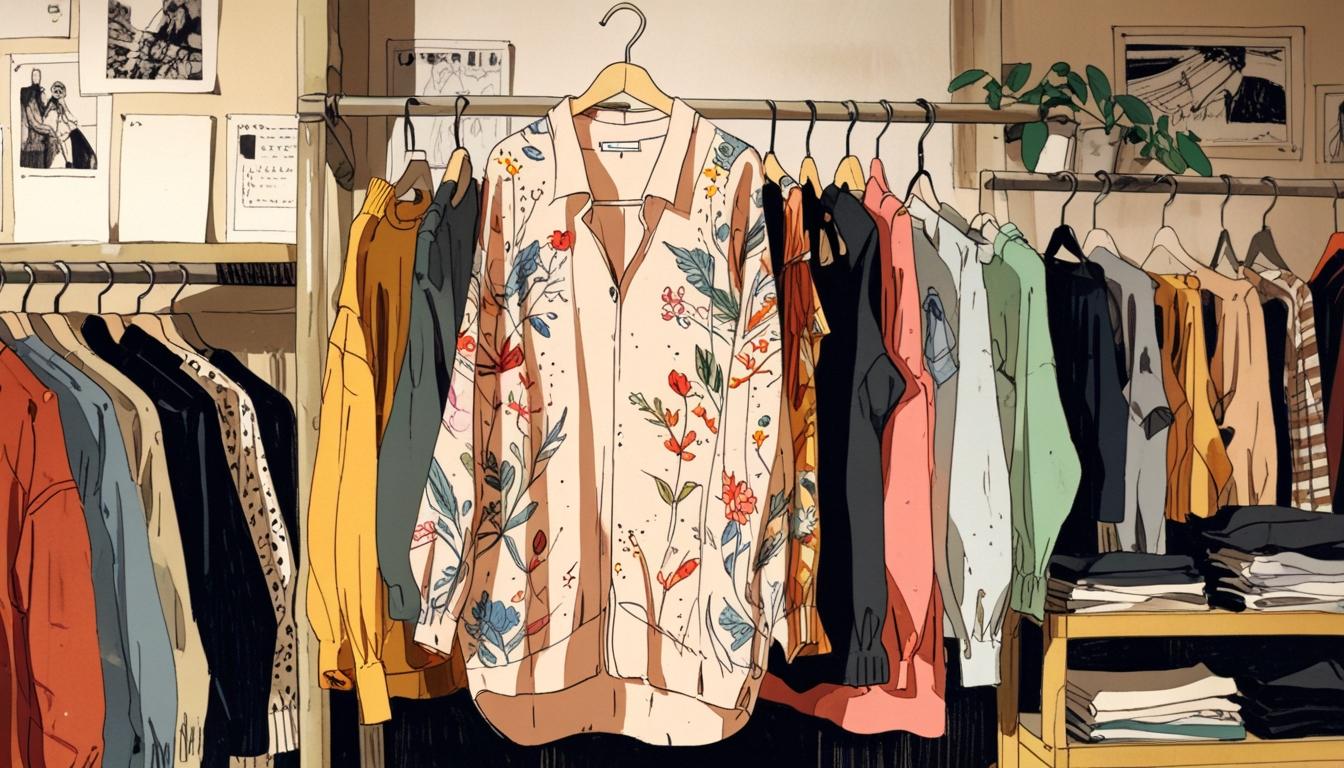Nick Kril, an inventory director at The Wardrobe in Philadelphia and an avid enthusiast of thrift and vintage shopping, highlights the unique appeal of secondhand clothing. “One of my favorite things about shopping secondhand is that everything is unique. There’s usually only one of each item in the store,” Kril shared. He emphasised his preference for quality fabrics and craftsmanship, often turning clothes inside out to examine their construction—a level of detail typically absent in fast fashion items.
The Wardrobe, a nonprofit organisation, provides free clothing to those in need through a storefront filled with donated secondhand apparel. Kril’s personal and professional experience underscores growing interest in sustainable fashion alternatives amid concerns over the environmental and economic impacts of fast fashion.
Fast fashion, characterised by rapidly produced, low-cost garments aiming to replicate designer trends, has recently faced pressures from the ongoing trade tensions between the United States and China. The imposition of tariffs of up to 145% on Chinese goods, some potentially reaching 245% when combined with earlier duties, has caused prices to rise for popular online fast fashion brands such as Shein and Temu. These changes come as tariffs and customs adjustments lead to longer shipping delays and increased costs.
Sheng Lu, professor of apparel sourcing and trade at the University of Delaware, explained that fast fashion brands, which operate on thin profit margins importing millions of items, may face significant challenges. “Before consumers have money to buy clothing or they’re willing to buy clothing, they first have to prioritize utilities, rent, gasoline,” Lu told 90.5 WESA. He also noted that the introduction of a 10% tariff on goods from countries other than China could further affect fast fashion companies that manufacture outside China.
The situation has spurred some optimism among sustainable fashion advocates. Personal stylist Tia Jones, founder of the styling company Tia Couture, has observed an uptick in thrifting over recent years. “I feel like I’ve seen an increase in it in the last couple of years,” Jones told 90.5 WESA. She considers secondhand shopping an effective way to reduce textile waste, highlighting the environmental benefits of diverting clothing from landfills.
In 2018, the U.S. Environmental Protection Agency reported that over 11 million tons of textiles were discarded in landfills. Unlike biodegradable materials, textiles can take years to decompose, releasing greenhouse gases during the process. Additionally, toxic dyes and chemicals may leach into soil and groundwater, while significant volumes of U.S. textile waste are exported overseas, contributing to pollution in countries such as Chile and Nigeria.
Clare Sauro, a fashion and textile history professor at Drexel University, emphasised the environmental toll of the fast fashion industry’s dependence on inexpensive, fossil fuel-derived materials and high consumption rates. “We’ve come to rely on inexpensive materials, which ultimately are predominantly coming from fossil fuels, which then impacts the environment,” she said to 90.5 WESA. Sauro argued that a paradigm shift is necessary for consumers to value higher-quality, longer-lasting clothing—even if it is secondhand—over disposable fashion trends.
The tariff-induced disruption in fast fashion supply chains may present an opportunity to address the excessive volume of textile waste generated globally. Sheng Lu suggested that tariffs could indirectly reduce the oversupply of low-cost, disposable garments: “Maybe through the tariff war, we can reduce the supply of textile waste, and this is maybe some silver lining of the tariff war.”
However, experts caution that the effects on thrift stores are complex. With fewer people able to afford new clothes, some may hold onto their garments longer, reducing donations to secondhand stores. This decreased availability could push up prices in thrift shops, potentially undermining one of their primary attractions—affordability. Lu explained, “A lot of studies show the top reason for consumers to buy secondhand clothes is not because of sustainability. Instead, it is because of the low price.”
Jones conveyed concerns about the potential impact on thrift store inventories and quality: “That’s just a concern of mine, [not] having the good quality pieces because people might not donate.” In contrast, business experts stress that secondhand apparel is not subject to tariffs, meaning thrift stores may remain shielded from these cost increases.
Dani Feher, founder of Philadelphia-based tailoring company Pransome, expressed hope that tariffs will encourage shoppers to focus on quality clothing available locally. “I think with those tariffs, it’s really giving us a moment to pause,” Feher said. “Don’t just buy it. Don’t buy it from another brand or another place and have it expedited.”
Overall, the current trade policies and shifting consumer behaviours may influence the fashion industry’s future landscape. While there is potential for increased interest in sustainable, high-quality secondhand clothing, challenges such as price fluctuations and consumer perceptions of used garments persist. Education and a cultural shift towards valuing durability and uniqueness may be essential to sustaining long-term changes in fashion consumption habits.
Source: Noah Wire Services
